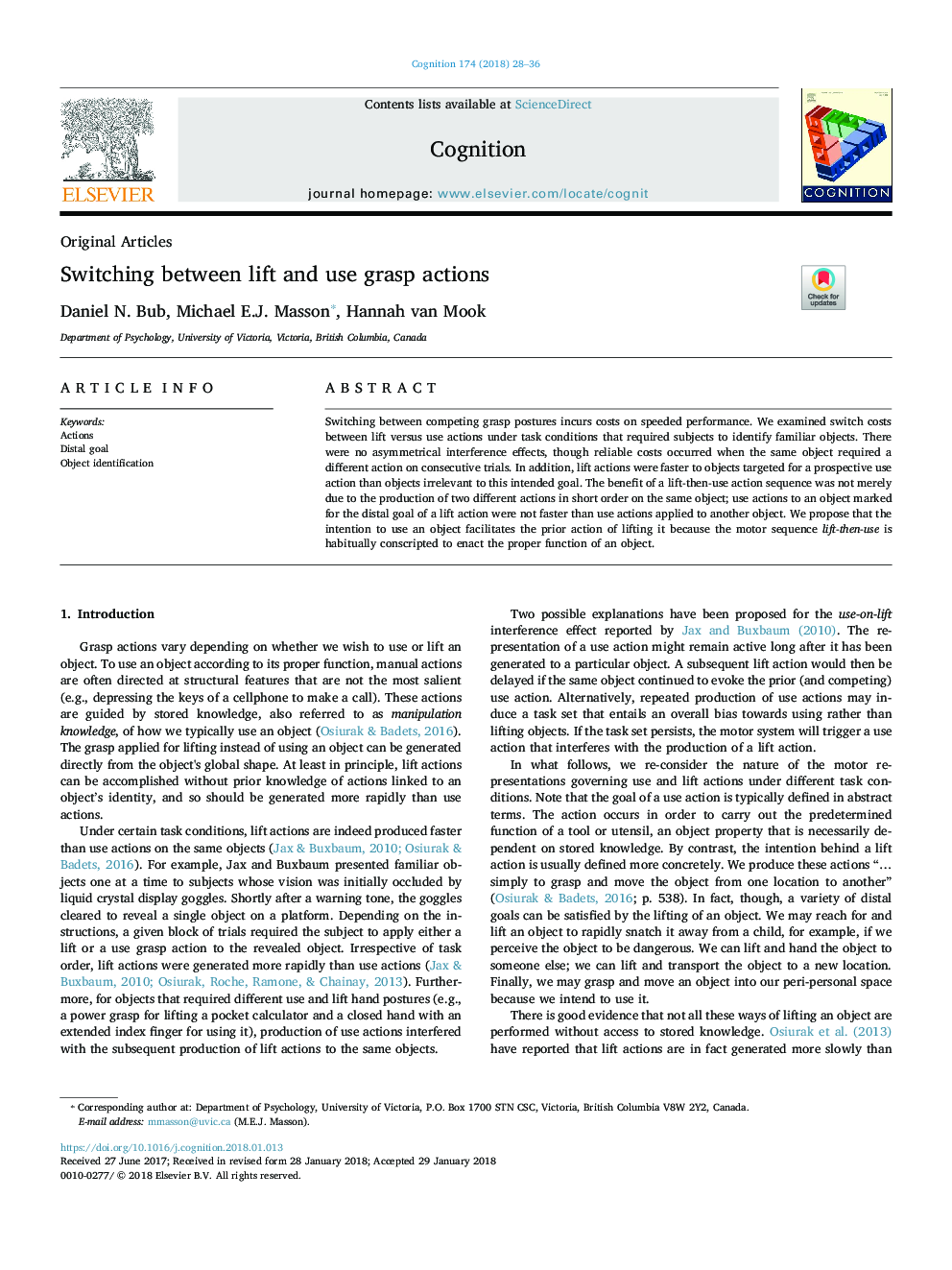| Article ID | Journal | Published Year | Pages | File Type |
|---|---|---|---|---|
| 7285395 | Cognition | 2018 | 9 Pages |
Abstract
Switching between competing grasp postures incurs costs on speeded performance. We examined switch costs between lift versus use actions under task conditions that required subjects to identify familiar objects. There were no asymmetrical interference effects, though reliable costs occurred when the same object required a different action on consecutive trials. In addition, lift actions were faster to objects targeted for a prospective use action than objects irrelevant to this intended goal. The benefit of a lift-then-use action sequence was not merely due to the production of two different actions in short order on the same object; use actions to an object marked for the distal goal of a lift action were not faster than use actions applied to another object. We propose that the intention to use an object facilitates the prior action of lifting it because the motor sequence lift-then-use is habitually conscripted to enact the proper function of an object.
Keywords
Related Topics
Life Sciences
Neuroscience
Cognitive Neuroscience
Authors
Daniel N. Bub, Michael E.J. Masson, Hannah van Mook,
